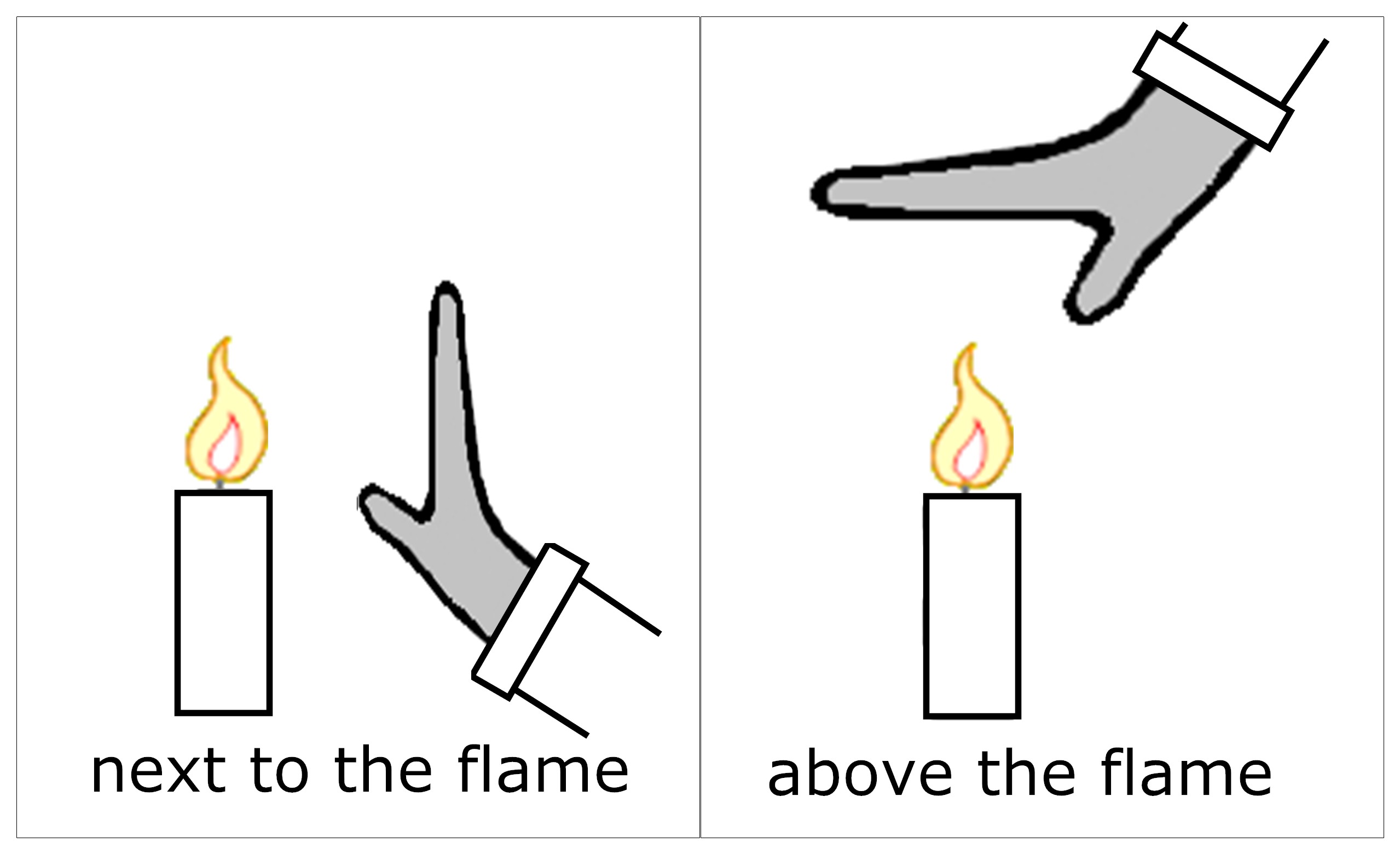Item RG004002: More energy will be transferred to a hand when it is above a flame than when it is beside the flame because in addition to the energy that is radiated by the flame, energy is also transferred by the movement of the warm air upward to the hand when it is above the flame.
A person wants to find out where to put his hands so that a candle will warm them as quickly as possible. He thinks that the best place to put his hands is where the most energy is transferred from the candle to his hands.

Will there be more energy transferred from the flame to his hand when it is above the flame compared to when it is next to the flame? Why or why not?
- No, the same amount of energy will be transferred to his hand whether it is above the flame or next to the flame because the flame radiates energy equally in all directions.
- Yes, more energy will be transferred to his hand when it is above the flame because in addition to the energy that is radiated by the flame, energy is also transferred by the movement of the warm air upward to his hand when it is above the flame.
- No, more energy will be transferred to his hand when it is next to the flame because the same amount of energy will be transferred by the movement of warm air to his hand in both positions, but more energy will be radiated by the flame in the sideways direction than in the upward direction.
- Yes, more energy will be transferred to his hand when it is above the flame because no energy is radiated by the flame. Energy from a flame is only transferred in an upward direction by the movement of warm air.
- Distribution of Responses

- Scale Score for Item Difficulty
(200[Easy]-800[Difficult]) - 466
- Students Responding Correctly
| Group | Correct | Total | Percent |
|---|---|---|---|
| Overall | 4344 | 7193 | 60% |
| Grades | |||
| 4–5 | 317 | 619 | 51% |
| 6–8 | 2118 | 3512 | 60% |
| 9–12 | 1909 | 3062 | 62% |
| Gender | |||
| Male | 2086 | 3299 | 63% |
| Female | 2137 | 3695 | 58% |
| Primary Language | |||
| English | 3936 | 6433 | 61% |
| Other | 287 | 547 | 52% |
- Disciplinary Core Ideas
- PS3.B Light also transfers energy from place to place.
PS4.B When light or longer wavelength electromagnetic radiation is absorbed in matter, it is generally converted into thermal energy (heat). Shorter wavelength electromagnetic radiation (ultraviolet, X-rays, gamma rays) can ionize atoms and cause damage to living cells. - NRC Framework
- Heating is another process for transferring energy. Heat transfer occurs when two objects or systems are at different temperatures. Energy moves out of higher temperature objects and into lower temperature ones, cooling the former and heating the latter. This transfer happens in three different ways—by conduction within solids, by the flow of liquid or gas (convection), and by radiation, which can travel across space.

